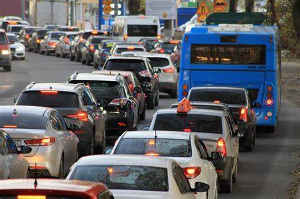Navigating Changes: Transport Secretary Mark Harper’s Vision For British Drivers

In October 2023, Transport Secretary Mark Harper unveiled the ‘Plan for Drivers,’ outlining the Conservative Party’s strategies to assist car owners across the UK.
With recent years bringing various contentious issues impacting drivers, readers may be interested in Mr Harper’s long-term plans, which aim to address these concerns head-on.
But what do these announcements mean for road users and motor traders throughout Britain? Let’s dive into the topic and find out more:
New Guidelines For 20mph Zones
In recognising the importance of 20mph zones by enhancing road safety within residential areas, the government updated its 20mph speed limit guidance.
Acknowledging that overuse might diminish public acceptance, future and existing 20mph zones will undergo meticulous review on a road-by-road basis.
This approach ensures that local consent guides decision-making to strike a balance between safety measures and public approval.
So, while speeding is wrong in any instance, the harsher consequences, such as a fine, penalty points and a potential insurance policy price increase, won’t necessarily be fully imposed if a driver is caught going 4mph over the limit in a 20mph zone.
Yellow Box Junctions
Addressing the confusion surrounding yellow box junctions and the parking charge notices (PCNs), the policy paper introduced plans for fair, proportionate, and consistent enforcement.
The government aims to develop sector-led guidance to assist local authorities outside London in using moving traffic enforcement powers effectively. This initiative, especially concerning yellow box junctions, will provide clarity to drivers and promote fair enforcement practices.
Low Traffic Neighbourhoods (LTNs)
One focal point of the government’s paper was putting an end to unfair enforcement against private and motor trade drivers.
This initiative prompted the introduction of new guidelines for Low Traffic Neighbourhoods (LTN).
Emphasising the significance of local support, councils are now required to review existing LTNs.
This shift aims to ensure a fairer approach to traffic management, addressing drivers’ concerns in affected areas.
National Parking Platform
Parking challenges have plagued drivers, with escalating fines and the transition from payment machines to apps causing growing unease.
The paper stressed the need for enhanced parking technology to alleviate these concerns.
Consequently, the government plans to launch the National Parking Platform by autumn 2024. It will be open to nationwide parking providers, streamlining the parking process and eliminating the need for multiple parking apps.

Bus Lane Management
In an effort to help traffic flow, the paper clarified the future use of bus lanes. These lanes will only be implemented where they serve a practical purpose.
Updated guidelines ensure bus lanes operate exclusively when timetables are active, or traffic congestion hinders bus schedules.
This strategic approach aims to enhance traffic management, allowing bus lanes to fulfil their intended purpose without impeding the overall traffic flow.
Our Conclusion
When it comes to political statements, there’s no insurance policy or guarantee for voters ensuring these changes come into force, but Transport Secretary Mark Harper’s ‘Plan for Drivers’ marks a significant step toward addressing the concerns of drivers in the UK.
By implementing targeted strategies and ensuring local support guides decision-making, these initiatives promise a more streamlined and fair experience for all UK private and motor trade drivers.






